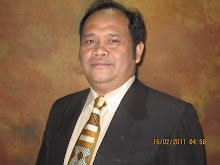PANEL UNIT ROOT TEST
Sunday, November 16, 2008
In the last decade, the issue of unit root test for heterogenous panels has attracted many academic researchers. In principle the application of the panel data unit root test is intend to increase the power of test by increasing number of sample. Increasing amount of sample can be done by increasing the number of cross sectional data and the number of time series data. The problem emerge in panel data are the issue of structural change when using long data series or contain heterogeneity when using cross sectional data. The famous example unit root test for homogenous panel was Summer and Heston (1991) using a panel data set covering a variety of industry, region, various country with a long period of time.
Unit root test has been developed by Quah (1992.1994), Levin and Lin (1993) for homogenous panels. That testing the unit root can not accommodate heterogeneity between groups, such as the unique influence of individuals (individual special effects) and a different pattern of residual serial correlations. Test statistics that proposed by Quah, Levin and Lin can more be used with the conditions for the existence of specific individual effects and also heterogeneity across groups and then requires N / T -> 0 and two N (cross section dimension) and T (time series dimension) toward unlimited.
Pesaran and Smith (1995), and Pesaran, Smith and Im (1996) showed that the inconsistencies in the estimation model dynamic heterogeneous panels. Furthermore, based on the paper, the Im, Pesaran and Shin (2002) introduced the unit root test with dynamic heterogeneous panels. In general, the unit root test with dynamic heterogeneous more used compared with the homogenous dynamic. Im, Pesaran and Shin (IPS) framework using the likelihood procedure based on an alternative test average unit root test statistics in each individual group for the panel. IPS was testing based on the average (augmented) Dickey Fuller (1979), which refers to the t - test bar. Such as procedures performed by Levin and Lin, unit root test done by the IPS is to consider the characteristics of serial correlation dynamics and heterogeneity residues for each panel group. Statistics (IPS) is indicated in the convergence of the standard normal probabilities in line with sequential T to unlimited number, and followed by the N to unlimited number, where T is the time series dimension and N is the cross sectional dimension. The diagonal convergence between T and N to unlimited number, while NT -> k, where k is a constant non-negative limited number. In special cases, where the residual of the individual DF Regression are serially correlated, then Z ~ tbar which is a modified t-stat will distributed with the normal standard at the time of N → ∞ and T fixed, so that the length of T> 5 for the regression with the intercept and DF T> 6 for DF regression with intercept and linear time trends. Next, the test was also developed to test how T and N fixed with the average DF. Simulation results that with the big ordo of the ADF regression; the performance of the limited sample t-bar test is very satisfactory and gives better results than Levin-Lin (LL) test. Therefore, in this paper will attempt to simulate formulas and procedures of Pesaran.
Unit root test has been developed by Quah (1992.1994), Levin and Lin (1993) for homogenous panels. That testing the unit root can not accommodate heterogeneity between groups, such as the unique influence of individuals (individual special effects) and a different pattern of residual serial correlations. Test statistics that proposed by Quah, Levin and Lin can more be used with the conditions for the existence of specific individual effects and also heterogeneity across groups and then requires N / T -> 0 and two N (cross section dimension) and T (time series dimension) toward unlimited.
Pesaran and Smith (1995), and Pesaran, Smith and Im (1996) showed that the inconsistencies in the estimation model dynamic heterogeneous panels. Furthermore, based on the paper, the Im, Pesaran and Shin (2002) introduced the unit root test with dynamic heterogeneous panels. In general, the unit root test with dynamic heterogeneous more used compared with the homogenous dynamic. Im, Pesaran and Shin (IPS) framework using the likelihood procedure based on an alternative test average unit root test statistics in each individual group for the panel. IPS was testing based on the average (augmented) Dickey Fuller (1979), which refers to the t - test bar. Such as procedures performed by Levin and Lin, unit root test done by the IPS is to consider the characteristics of serial correlation dynamics and heterogeneity residues for each panel group. Statistics (IPS) is indicated in the convergence of the standard normal probabilities in line with sequential T to unlimited number, and followed by the N to unlimited number, where T is the time series dimension and N is the cross sectional dimension. The diagonal convergence between T and N to unlimited number, while NT -> k, where k is a constant non-negative limited number. In special cases, where the residual of the individual DF Regression are serially correlated, then Z ~ tbar which is a modified t-stat will distributed with the normal standard at the time of N → ∞ and T fixed, so that the length of T> 5 for the regression with the intercept and DF T> 6 for DF regression with intercept and linear time trends. Next, the test was also developed to test how T and N fixed with the average DF. Simulation results that with the big ordo of the ADF regression; the performance of the limited sample t-bar test is very satisfactory and gives better results than Levin-Lin (LL) test. Therefore, in this paper will attempt to simulate formulas and procedures of Pesaran.
Complete Paper in Indonesia Language.
Summary Paper in Indonesia Language.
